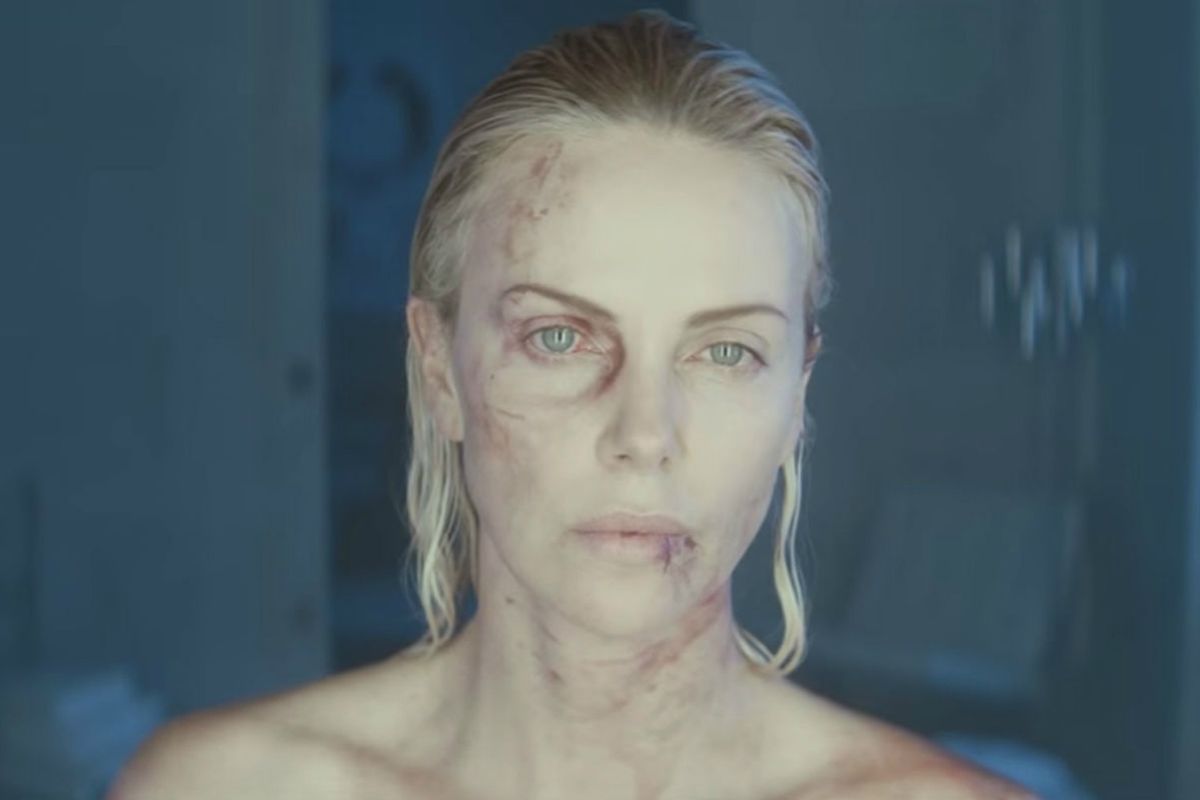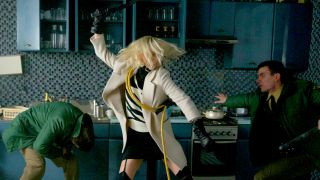Atomic Blonde director on how he created Charlize Theron’s brutal fighting style (and why it’s actually nothing like John Wick)

One thing ‘80s spy thriller Atomic Blonde does very well is its fight scenes. Not surprising with John Wick co-director and former stuntman David Leitch literally calling the shots. In terms of action, though, it’s a very different film, replacing Keanu Reeve’s quick, precise gun shots with a more brutal weight and physicality.
Charlize Theron’s character, Lorraine Broughton, is a highly trained spy who can (and will) use anything to win a fight. From elbows to saucepans, hose pipes and more - almost every action sequence in Atomic Blonde is exhausting to watch as agents and spies beat the hell out of each other, pushing endurance and the limits of the human body. At one point I pleaded with the bad guy to stay down because I didn’t think I could take another round.
I asked David Leitch what it was like to create the film’s action style, and how he managed to create such a brutally ruthless spy for Charlize Theron. “You start with the character,” he told me. “You start putting together mood reels, or even choreography vignettes, and you experiment with different styles of martial arts. You start to think about what would define this character.”
In the case of Theron, that included taking into account her own physicality: “with Charlize there’s elements of Thai boxing, with the elbows and the knees, because those strikes are effective for someone who’s a little bit smaller,” says Leitch. “It’s really a lot like acting, we’re just building a character from the ground up.”

Part of this ability to so clearly visualise and create a character’s physicality comes from David Leitch and his former co-creator Chad Stahelski’s past as movie stunt men. “I think Chad and I, we were choreographers and stunt men for years, we approach choreographer first from the character’s perspective.” It’s that focus which gives Leitch’s movie such defining and different action. For John Wick, “his style really is something that defines him, the precision, no nonsense. The immediate skill,” explains Leitch. However, “when we were defining Lorraine Broughton, with her action, it’s anything goes. ‘I might be a hundred pounds lighter but I can use anything in this room to kill you because that’s the kind of spy I am, and I have no problem doing that to survive. I’m a survivor.’”
It’s that combination of Lorraine Broughton’s physicality as a woman and the world she inhabits as a top tier spy that creates her on screen. As Leitch puts it, “defining a style that looks like you might do anything to survive in a world where you might be undergunned.” On screen Theron is every bit Daniel Craig’s equal, and at times a better Bond than actual Bond - raising a cynical eyebrow over a huge glass of vodka one minute, and then fighting enemy agents through hallways and stairs until there’s blood and teeth everywhere the next.

“I definitely think it’s time for female action roles and these types of action roles for females,” says Leitch. “That was something I was really drawn to with the script, this unapologetically female lead. And there’s never any rationalisation of her being a woman. She’s just a bad ass spy and we never have to address anything after that, we’re going to treat her just the same way we treat James Bond and everybody else.” It’s an attitude that’s impossible to miss when you watch Atomic Blonde - there’s never any mention of Lorraine Broughton’s gender, she’s just a spy and ruthlessly good one; something that Leitch’s direction and choreography combines perfectly to create.
Sign up for the Total Film Newsletter
Bringing all the latest movie news, features, and reviews to your inbox

I'm GamesRadar's Managing Editor for guides, which means I run GamesRadar's guides and tips content. I also write reviews, previews and features, largely about horror, action adventure, FPS and open world games. I previously worked on Kotaku, and the Official PlayStation Magazine and website.
Most Popular

